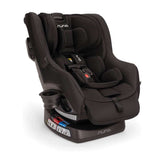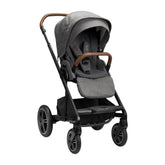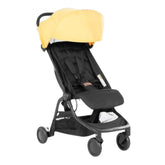How to Use Time-Outs to Discipline Your Toddler Effectively

Updated 23 Dec 2024
Are you struggling to figure out how to discipline your toddler when they don't listen? When children act out in unacceptable ways, many parenting experts recommend using a discipline technique called time-out to correct the behavior. For instance, you instruct your little one not to take a toy from their sibling, but they don’t obey. As a consequence, you have your child sit quietly in a corner so that they can take a break to calm down and reflect on their behavior.
While the American Academy of Pediatrics (AAP) says giving a child a time-out can be a useful tool to help them cool down and learn good behavior, not all experts (or parents) are in agreement on how and when to use them. Time-out may not be appropriate for every child or situation but when used wisely, they can offer your toddler a quick break from an intense situation and allow them the time and space to calm down. It also communicates the message that misbehavior is not allowed.
Is Time-Out a Good Punishment for Toddlers? When to Use Time-Outs
Time-outs can be one of the best ways to discipline your toddler. Time-outs are most effective when used to help a child calm down, get over a tantrum, or stop repeated misbehavior. Most children won’t understand the concept of “consequences” or even have the self-control to stay put in the time-out area until they’re about 2 or 3 years old. After that, time-outs continue to be an effective discipline technique for children until they’re about 8 years old, at which point natural consequences that fit the misbehavior are a more appropriate strategy.

How to Do a Time-Out Effectively
Every caregiver, parent, and doctor has a slightly different spin on how to deliver an effective time-out. Some people view them as a penalty, while others see them as an opportunity for contemplation. Some caregivers are rather strict, whereas others are more gentle. Regardless of the particular “style,” most time-outs follow the same basic pattern. Let’s examine a few of the basics when it comes to administering an effective time-out so that both you and your toddler get the most from them.
1. Issue a warning.
When your child acts out in an unacceptable way, give a warning first and name the behavior. Let them know what they did that was wrong, the consequence if they don't stop, and how you want them to behave instead. For example, "I asked you to stop jumping on the couch. If you don't stop, you'll have a time-out. Please sit down to play instead." Try not to spend a lot of time lecturing, scolding, or arguing.
2. Do what you said you’d do.
If (when?) your little one ignores the warning and continues the behavior, you must follow through on the consequences promptly. Tell them they are going to their time-out area and why. For example, calmly say, “You have to go into a time-out because you kept jumping on the couch after I asked you to stop.” That’s all. Then take them to their time-out spot.
3. Take your child to their time-out area.
Have your child go to a quiet place with limited distractions, like a corner of a room. In the absence of toys or other forms of entertainment, your child may be more likely to think about why they are sitting in time-out and decide they don’t want to engage in behavior that will land them there again. Here are a few time-out spot ideas some parents use:
- Time-out chair: Put an adult-sized kitchen chair (which is harder for kids to scoot around or move) or even a high chair in the most boring room of the house or facing a blank wall. Place it far enough away so your child can’t kick or punch the wall.
- Time-out corner: Use a boring, unused corner, perhaps near a hallway or closet, for example. Avoid using a corner in the bedroom or playroom where nearby toys and devices may tempt them.
- Time-out blanket or mat: These are portable and easy to use in public or at a friend’s home. Place it in a boring spot and begin the timer.
4. Set a timer: How long should timeout be?
This is a good way to let your little one know time is being measured. Most experts recommend one minute per year of age. When your toddler is seated and calm, consider leaving the immediate area. Ignore your child while they’re in time-out —no talking to them or about them, no motioning in their direction, even if they’re fussing. By withholding your attention during the time out, you’re letting them know that misbehaving is not the way to get what they want
If your toddler gets up, take them back to the time-out spot (as many times as necessary) without speaking. Reset the timer and leave the area.
5. Encourage positive behavior after the time-out is over.
When the time-out is finished, get your little one and explain the rule again (“We don’t jump on the couch. I asked you to stop, but you did it again. That’s why you had to do a time-out.”) If they had a tantrum about something they needed to do, like picking up toys, direct them to finish the task. If they follow up with corrected behavior, be sure to praise them for their effort.
6. Show love.
Giving your little one a kiss or hug and telling them that you love them helps them learn that you love and care for them no matter what. Then, let it go. Don’t hang on to disappointment or anger, and try not to lecture or scold after the time-out is finished.
Using Time-Out When You’re Not at Home
Some parents feel self-conscious about disciplining their child when misbehavior happens in public or at a friend’s or family member’s home. Try to be consistent and follow through with a time-out as closely as possible to what you’d do at home. Give your child a warning. If they ignore you and continue the behavior, calmly remove your child to a quiet, more private area and start the timer on your watch or phone. Sit with your child in silence. Afterward, calmly walk your child back to the room, ready to respond again if the misbehavior continues.
The Takeaway on How to Use Time-Outs for Toddlers
Like most parenting subjects, there’s no single discipline technique that is the best way to discipline your toddler or works perfectly for every child. If you decide to use time-outs, observe your toddler’s response and trust your gut on how to best use it with your child. It may work best when used in conjunction with toddler discipline techniques, such as redirection and positive reinforcement. Though time-outs can be challenging in the beginning, it does get easier with time. Calm, consistent enforcement of the rules will help reinforce better behavior in your child.









